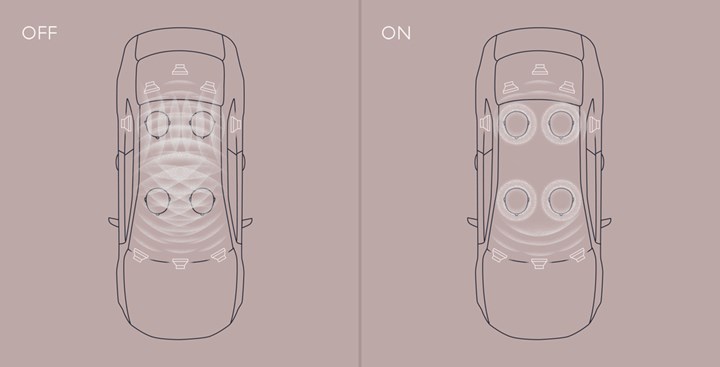The Sounds in Polestar
Innovative audio for the forthcoming electric car
#electronics
In the U.S. it will be about another year until the Polestar 2, an electric sedan that is, not surprisingly “designed to compete with the Tesla Model 3,” will be available. (There is a Polestar 1, but that is a limited-edition model, with the 2 being made for a larger market.) The Polestar 2 has two electric motors—one in the front and one in the back—for a total 300 kW of power and has a targeted range of 275 miles. Polestar is spun out of Volvo, which is owned by Zhejiang Geely Holding Group, so suffice it to say that the odds are exceedingly good that there will be a Polestar 2, that it isn’t a cloud car destined to disappear in a puff of nothingness.
One of the things about electric vehicles that’s different than traditional internal combustion engine-powered vehicles is that because there is no engine noise, the sound in the cabin is more apparent. Which is probably why the company is working with Dirac, a Swedish audio company, and Harman Kardon, the audio system supplier that is seemingly ubiquitous in the automotive space.
The audio company is using its Dirac Unison system with the Harman hardware; it measures the listening space and based on that information is able to precisely optimize the impulse and frequency response of each speaker. In addition to which it has an approach to bass management that is said to be particularly unified and tight within the cabin.

Dirac Unison system improves sound. (Image: Dirac)
According to Lars Carlsson, Dirac General Manager of Automotive Audio, “It is sophisticated digital audio that will allow the autonomous vehicle cabin to transform into a mobile home theater, conference room, and entertainment center – each of which is inherently reliant on exceptional sound quality.”
We look forward to hearing it. Next year.
RELATED CONTENT
-
Chevy Develops eCOPO Camaro: The Fast and the Electric
The notion that electric vehicles were the sort of thing that well-meaning professors who wear tweed jackets with elbow patches drove in order to help save the environment was pretty much annihilated when Tesla added the Ludicrous+ mode to the Model S which propelled the vehicle from 0 to 60 mph in less than 3 seconds.
-
Autoline After Hours: The 2020 Cadillac XT6
Cadillac currently has three non-car vehicles in its lineup, the imposing and possibly venerable Escalade, the XT5, which started its existence as the SRX and is now crushing it in the market, and the most recent, the compact XT4, which is in a sweet spot for those looking to get into the premium portion of the market.
-
FCA Opens the Door to The Future
FCA introduced a high-tech concept vehicle today, the Chrysler Portal, at the event previously known as the “Consumer Electronics Show,” now simply CES.


.jpg;width=70;height=70;mode=crop)